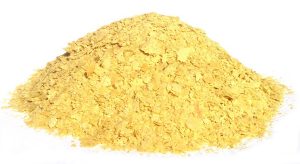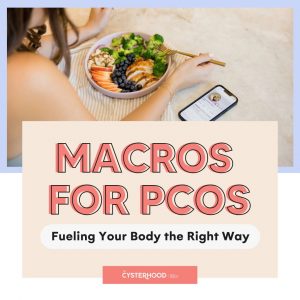Living with Polycystic Ovary Syndrome (PCOS) often means managing a long list of chronic symptoms, everything from stubborn weight gain, infertility, excessive hair growth on the face and body, acne, mood swings, fatigue, and and hormonal imbalances that can throw your whole system off. But one symptom that doesn’t get talked about enough? Pain. For many Cysters, PCOS pain (especially cramping) can be sharp, persistent, and sometimes completely debilitating.
If that’s you, know this: you’re not imagining it, and you don’t have to just “deal with it.” While most people experience some mild cramping around their cycle, PCOS-related pain can be much more intense and far less predictable. But there’s good news…there are ways to address the root cause and find real, lasting relief.
In this post, we’re breaking down exactly why PCOS can cause cramping, what makes this pain different, and the natural strategies that can help you feel better.


Cramps And PCOS: Understanding the Link and Finding Relief
Most women feel some period pain or mild cramping from time to time. Maybe you didn’t hydrate enough, you’re recovering from an illness, or maybe you ate something that just didn’t agree with you. It happens. But for women with PCOS, pain can be a lot more than occasional; it can be daily, and periods can bring cramps so intense they completely wipe you out.
If that sounds like you, take a deep breath. You don’t have to live with chronic pain! And, you also don’t need to always rely on prescription painkillers or invasive procedures to feel better. There are natural, holistic ways to get to the root cause of PCOS-related pain and actually work toward long-term relief, not just a temporary fix.
But, before we talk about how to ease the pain, let’s first understand why PCOS can cause cramping in the first place.


Can PCOS Cause Cramping?
Yes! Many Cysters experience cramping throughout their cycle and particularly during their periods because of PCOS hormonal imbalance. (Here’s more on what periods are like with PCOS.)
How Does PCOS Cause Cramps?
Hormone balance is essential for a healthy menstrual cycle. Each phase of the menstrual cycle relies on precise shifts in sex hormones to keep things moving along. When even one hormone is out of balance, it can throw off the entire cycle. In PCOS, excess androgen levels (male sex hormones) often interfere with this hormonal rhythm, which interferes with the menstrual cycle and causes cramping in a few ways. Here’s how:
Irregular Ovulation and Ovarian Cysts
Ovulation is when a mature follicle in the ovary releases an egg into the fallopian tube, where it can either be fertilized or eventually shed during your period. But with PCOS, your body might delay or skip ovulation altogether. When that happens, the follicles that were supposed to release an egg can just keep growing, sometimes turning into ovarian cysts.
That buildup can stretch and put pressure on the ovaries, which is why you might feel cramping or a dull ache, even when you’re not on your period. In some cases, the cysts can even rupture, leading to severe pain in the lower abdomen.
Endometrial Build-Up
Remember how each phase of the menstrual cycle depends on precise hormonal shifts? Ovulation plays a key role by triggering the production of progesterone, which helps stabilize the uterine lining. Estrogen naturally builds up that lining to prepare for a potential pregnancy (which is totally normal), but without enough progesterone to balance it out, estrogen keeps thickening the lining beyond what’s needed. Not only can this have a negative effect on fertility, but all that endometrial build-up has to be shed during menstruation, which can lead to a heavier, longer period and more severe menstrual cramps.
Inflammation
High androgen levels can trigger insulin resistance, which is when your body struggles to process glucose and carry out metabolic functioning correctly. When this happens, our body’s immune system overreacts, prompting chronic, low-grade inflammation. It’s like a domino effect!
This inflammation can make the pelvic area more sensitive and reactive, increasing the pain and discomfort especially around the ovaries and uterus. It can also trigger the release of certain chemicals, like prostaglandins, which cause the uterus to contract more strongly. These stronger-than-usual contractions can lead to more noticeable or painful cramping, even outside of your period. Over time, this inflammation can also worsen hormonal imbalances, creating a cycle of ongoing pain and discomfort.
Other Causes of Cramping
There are other issues that could cause severe cramping that may not have to do with PCOS. So, if you’re really struggling and no remedies are working, seek medical attention and talk to your doctor about endometriosis, pelvic inflammatory disease, uterine fibroids, irritable bowel syndrome, pelvic floor injuries, and other potentially painful disorders that could explain your cramps.
What Do PCOS Cramps Feel Like?
What cramping and menstrual pain feels like really varies from person-to-person based on the severity of their underlying issues. However, this is what each type of pain could be signalling;
- Dull, Persistent Pain in the Pelvic Area: This kind of ache often comes from inflammation or the pressure of growing ovarian cysts.
- Strong, Intense Waves of Pain in the Pelvic Area: Many women with PCOS describe menstrual cramps like this, especially when the uterine lining has gotten thicker than usual because of low progesterone.
- Sharp, Stabbing Pains to One Side of the Pelvis: When ovarian cysts get bigger or are about to rupture, you might feel sudden, sharp pains on one side of your pelvis.
If these don’t describe your pain well, there could be another issue. Read our other posts on PCOS abdominal pain and PCOS pelvic pain.


How To Relieve PCOS Cramps for Good
Try an anti-inflammatory, gluten- and dairy-free diet.
And give it time! Inflammation and excess androgens are two major root causes behind PCOS pain, and the good news is, both can be supported naturally through the right nutrition. While dietary changes aren’t an overnight fix, they can create long-term relief as your hormones gradually begin to rebalance.
That’s why I often recommend trying a gluten- and dairy-free anti-inflammatory diet for at least 30 days. This gives your body time to calm inflammation, improve insulin sensitivity, and regulate hormone levels in a more sustainable way. After those 30 days, you can try reintroducing certain foods slowly and see how your body responds, because everyone’s symptoms and sensitivities are different.
And don’t worry—this isn’t about restriction. It’s about finding delicious, nourishing foods that actually help you feel better. Inside The Cysterhood app, you’ll find meal plans, recipes, and grocery lists made just for Cysters. So if you’re ready to reduce cramping and other symptoms at the root, we’ve got your back!
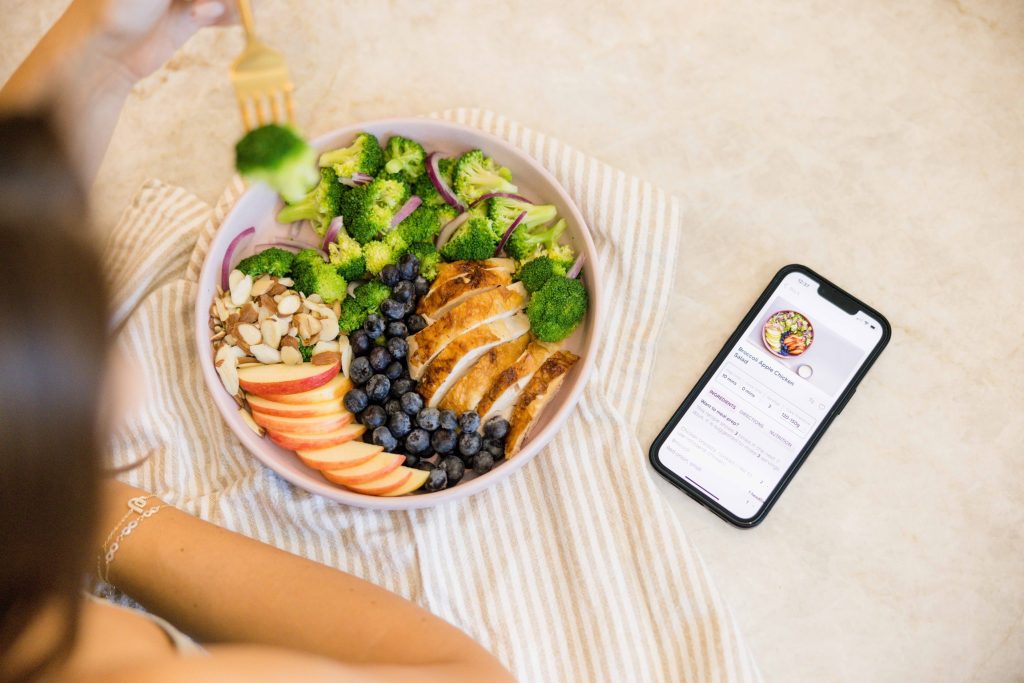

Take Ovasitol, berberine, and other strategic supplements.
Your body needs the right nutrients to function properly, and when you’re dealing with PCOS, some of those needs are even higher. Chronic inflammation, hormonal imbalances, and blood sugar dysregulation can all contribute to painful cramps. That’s where the right supplements can make a big difference. These are my go-to recommendations for supporting your PCOS symptoms from the inside out:
- Ovasitol: This combination of myo- and d-chiro-inositol in the body’s natural 40:1 ratio helps improve insulin sensitivity and hormone balance. Better blood sugar balance = less inflammation and more regular ovulation.
- Berberine: A natural compound that supports blood sugar regulation, improves insulin sensitivity, and lowers inflammation—three key players in PCOS pain.
- Omega-3: This anti-inflammatory powerhouse can help reduce prostaglandin levels—chemicals that cause uterine contractions. High levels can lead to more intense cramps, so balancing them can ease period pain.
- Curcumin: The active ingredient in turmeric, curcumin is known to calm chronic inflammation, which can help reduce discomfort during your cycle.
- Multivitamin: When you’re not getting enough of the essential nutrients your body needs, it can worsen hormone imbalance and make PCOS symptoms more difficult to manage. A high-quality multivitamin fills in those gaps and supports your body on a cellular level.
You can find all of these in our OvaFit line! These supplements are NSF-certified, PCOS-friendly, and formulated with research-backed ingredients to help Cysters feel their best.
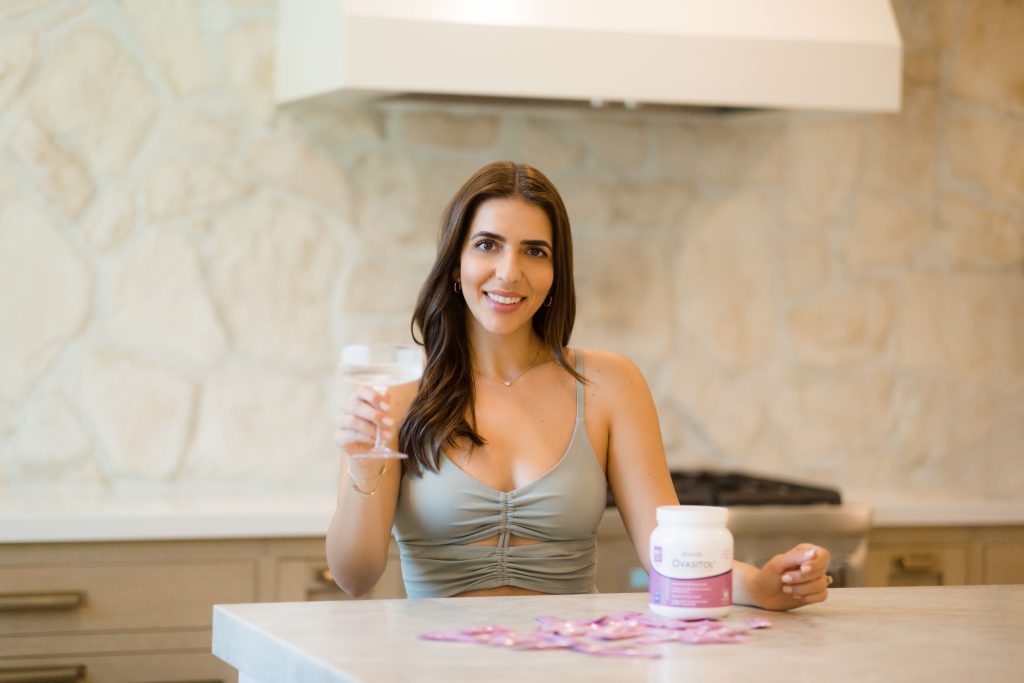

Drink hormone-balancing teas.
Herbs are another helpful way to naturally support your body and balance hormones! There are quite a few teas that have been shown to reduce androgen and testosterone levels: spearmint, lemon balm, orange peel, chamomile, rosehip, peppermint, cinnamon, nettle, lavender, and calendula tea all have powerful hormone balancing effects!
That’s why they’re all included in my Testosterone Relief Tea blend. With just two cups a day over time, you can experience relief from lots of PCOS symptoms related to high androgens, including cramping!


Do regular, slow-weighted workouts even when on your period.
Movement is medicine, especially for PCOS. Regular, slow-weighted workouts can help lower inflammation, build lean muscle, improve insulin sensitivity, and support hormone balance without the cortisol spike that can come from intense cardio or HIIT. But here’s the key: how you move matters.
With PCOS, your workouts should be gentle, intentional, and cortisol-conscious. That means slow, controlled strength exercises with 60-second rest breaks between sets. These pauses give your body time to reset and keep your stress hormones in check, which is especially important if you’re dealing with cramps, fatigue, or irritability during your cycle.
While you might not feel like moving when cramps hit, light movement can actually help. Exercise releases endorphins (your body’s natural pain relievers!) and supports circulation, which can ease discomfort. But always listen to your body. Some days you may need movement, and other days, you may need extra rest, and that’s okay too.
You can find a whole library of PCOS-friendly, slow-weighted workouts inside The Cysterhood app, including full-length routines that support your cycle, hormones, and energy levels.
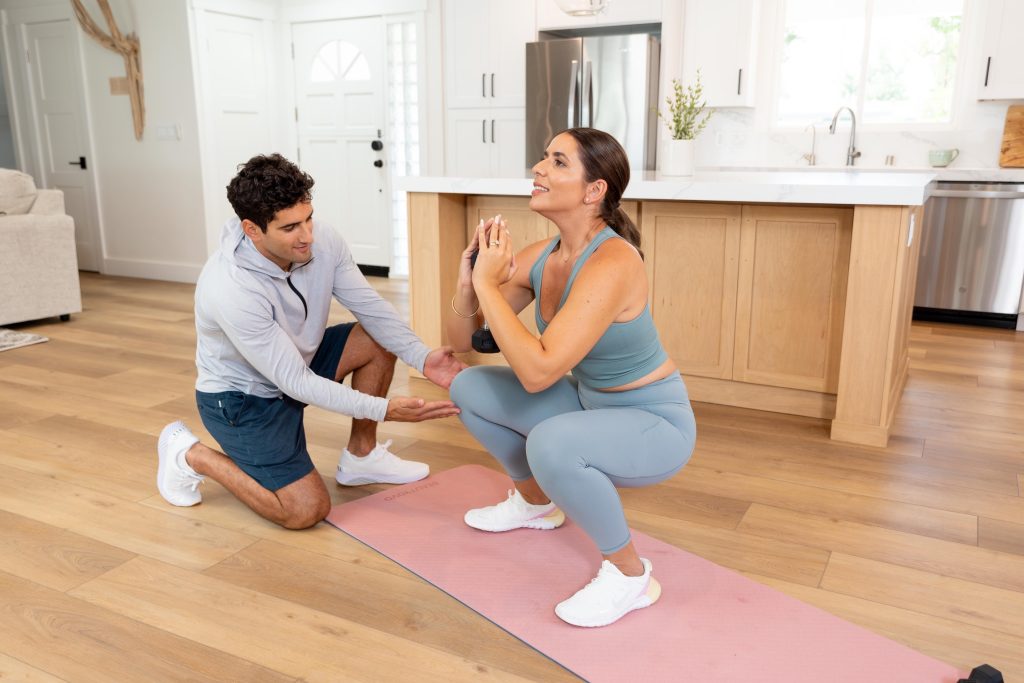

Drink plenty of water.
Staying hydrated might seem simple, but it’s one of the most powerful (and underrated!) ways to help relieve cramps and PCOS-related pain. When your body is properly hydrated, your muscles (including the uterus) are less likely to spasm and cramp. This is because water keeps muscles soft and pliable, and hydration is essential to proper nerve communication in the body!
Water also helps flush out excess hormones, reduce bloating, and support better circulation, which can ease inflammation and pelvic discomfort. Dehydration, on the other hand, can make cramps feel sharper and more intense. So, sipping water throughout the day (especially during your period) is a small habit that can make a big difference in how you feel.
Get plenty of quality rest.
Prioritize rest, even when sleep feels hard. If you’ve ever tossed and turned all night with PCOS, you’re not alone. Sleep struggles are common for Cysters, thanks to hormone imbalances that can disrupt melatonin, increase cortisol, or cause blood sugar crashes in the middle of the night.
But here’s the thing: sleep is when your body does its deepest healing. It’s when hormones rebalance, inflammation calms, and your metabolism resets. So even though getting good sleep with PCOS can feel frustrating, it’s still one of the most powerful tools you have for reducing symptoms like cramps, fatigue, and mood swings.
Instead of aiming for perfection, start by building a calming nighttime routine: reduce screen time before bed, enjoy a cup of Testosterone Relief Tea, try box breathing to lower cortisol, and create a consistent sleep schedule that helps your body wind down naturally.
And if sleep doesn’t come easily every night? Be kind to yourself. Prioritizing rest in any form (whether it’s sleep or simply slowing down) is a meaningful part of your PCOS healing journey. Here’s more on how to get better sleep with PCOS.
Reduce stress and practice stress management.
Managing stress isn’t just good for your mind, it’s essential for easing PCOS cramps and pain, too. When your body is under chronic stress, it produces more cortisol, a hormone that can throw off your entire hormonal balance, increase inflammation, and make cramping worse.
High stress levels can also disrupt ovulation and worsen pain sensitivity, making you feel more achy and tense. Practicing stress-reducing habits like deep breathing, gentle movement, meditation, journaling, getting out in nature, or even a quiet cup of Testosterone Relief Tea can help calm your nervous system, lower cortisol, and support a more balanced, less painful cycle. Small moments of calm really do make a difference!
Use pain management techniques in the meantime.
All of these steps are designed to holistically target the root causes of your PCOS cramping and, over time, they can make a big difference in how you feel. That said, healing is a process, and results won’t happen overnight. So while you’re working on the long-term, here are some pain-relief tools to help you manage cramping in the moment and get through those tougher days with more comfort.
- Use a TENS machine.
- Try heat therapy like heating pads or warm baths.
- Rest in the fetal position to relieve tension on your pelvis.
- Practice gentle stretching and yoga.
- Get a lower back or abdominal massage.
- Do deep breathing and guided meditation.
- Consider acupuncture. (This can have long-term gains, too!)
PCOS can cause cramping, but you can naturally relieve your pain!
Living with PCOS cramps can be tough, but relief is definitely within reach. By addressing the underlying causes and caring for your body, you can gradually ease the pain and improve other PCOS-symptoms, too! It’s a journey that takes time, but with patience and the right approach, you’ll find yourself feeling stronger, more balanced, and more in control of your cycle, and that makes all the difference.
For more ways to reverse your condition and live symptom-free with PCOS, head to the PCOS Weight Loss blog and listen to A Cyster and Her Mister podcast! I’ve got so much more to tell you about how you can naturally address the root issues of PCOS for long-term relief!
